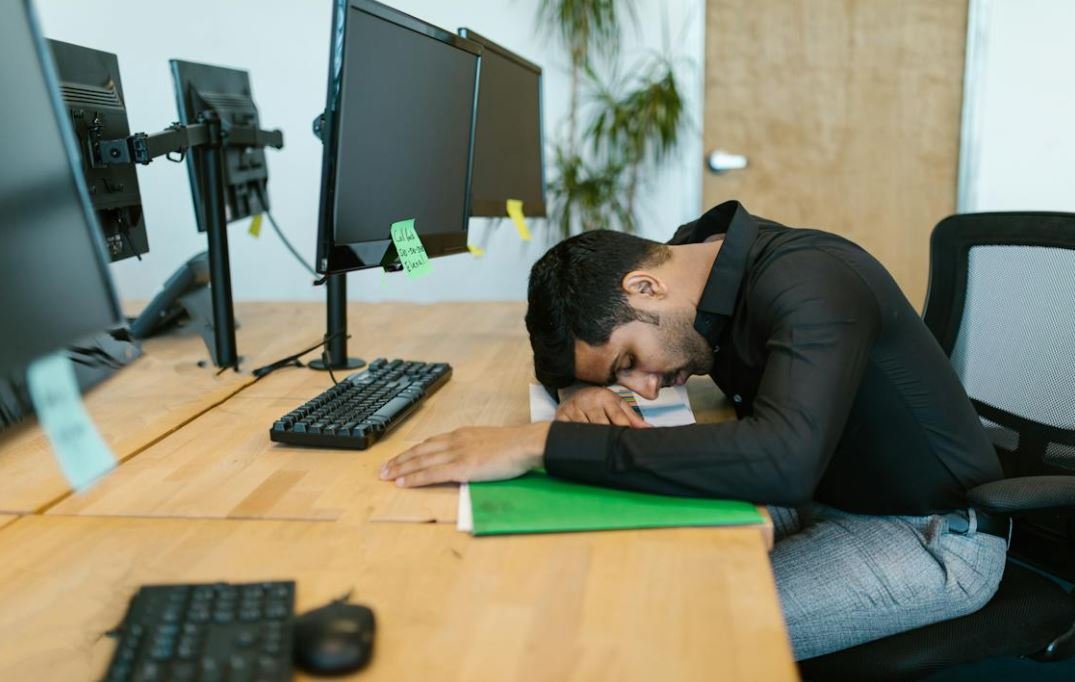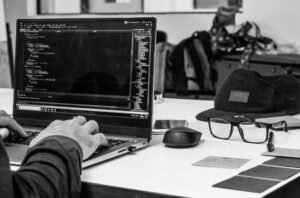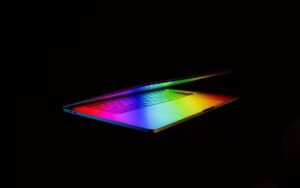AI Art Is Not Art
Artificial Intelligence (AI) has made remarkable progress in recent years, impacting various industries. One such area is the field of art. While AI-generated art has gained attention for its novelty and technical complexity, it raises questions about the nature of creativity and the definition of art itself.
Key Takeaways
- AI-generated art lacks the depth and emotional expression that human-created art possesses.
- Art encompasses the subjective human experience, which AI cannot replicate.
- The involvement of AI in art creation raises ethical concerns about originality and authorship.
Art, as traditionally understood, is a form of human expression that communicates thoughts, emotions, and experiences. It is the result of complex cognitive processes and reflects the artist’s unique perspective and creativity. AI, on the other hand, operates on algorithms and data input, lacking the human experiences and emotions that give art its depth and meaning. While AI can mimic certain artistic styles and techniques, it cannot replicate the essence of human expression.
*Artificial Intelligence lacks the ability to convey genuine human emotions and experiences, leading to a superficial representation of art.*
The involvement of AI in art creation also raises ethical concerns. When a machine generates art, questions arise concerning originality and authorship. While AI can produce visually impressive pieces, it does not possess the intention or personal connection that artists bring to their work. Additionally, AI artwork often relies heavily on existing data and patterns, leading to derivative compositions rather than true innovation.
*AI-generated art challenges the notion of originality and authorship in the art world, raising important ethical considerations.*
The Dichotomy of AI Art
The debate surrounding AI art centers around the dichotomy between creative expression and technical execution. While AI can flawlessly replicate existing artistic styles, it lacks the imagination and intuition that humans bring to the artistic process. Some argue that AI-generated art is more akin to an automated process rather than an authentic creative endeavor.
*AI art possesses technical precision, but its creative essence remains hollow without human involvement.*
The Limitations of AI Art
AI art also has inherent limitations in terms of originality and innovation. Despite being programmed to create unique outputs, AI systems are still influenced by the data they have been trained on. They tend to generate artwork that either closely resembles existing styles or produces a fusion of various known styles. This limitation hampers the ability of AI to produce truly groundbreaking and original artwork.
*While capable of generating mesmerizing visuals, AI art often falls short in terms of genuine novelty and revolutionary ideas.*
Examining the Impact of AI Art
| Aspect | AI Art | Traditional Art |
|---|---|---|
| Emotional Depth | Limited | Rich and Nuanced |
| Originality | Questionable | Depends on the Artist |
| Innovation | Often derivative | Potentially groundbreaking |
AI-generated art has undoubtedly gained popularity in recent years. It has expanded the frontier of what is technologically possible in the art world, captivating audiences with its aesthetic appeal. However, it is essential to critically examine and question whether AI art can truly be considered authentic and transformative in the same way that human-created art has been throughout history.
Conclusion
In conclusion, while AI-generated art may possess technical complexity and novelty, it does not capture the essence of human creativity and expression. The involvement of AI in art creation raises important ethical concerns regarding originality and authorship. AI art, although impressive, lacks the emotional depth and subjective human experience that define the art we know and appreciate. Therefore, it is crucial to recognize the limitations of AI art and continue to value the unique contributions of human artists in the world of art.

Common Misconceptions
Paragraph 1
One common misconception is that AI-generated art is not art. Many people believe that artificial intelligence lacks creativity and the ability to express emotions, therefore dismissing the concept of AI art altogether. However, this overlooks the fact that AI is capable of learning from existing artwork and generating its own unique pieces. AI-created art can be just as thought-provoking and visually appealing as traditional art forms.
- AI algorithms can create original pieces without human intervention.
- AI art can challenge traditional artistic norms and push boundaries.
- AI-generated artworks can evoke emotions and engage viewers.
Paragraph 2
Another misconception is that AI-created art lacks authenticity. Some argue that true art must come from human experiences and perspectives, and therefore, AI-generated art cannot achieve the same level of depth and authenticity. However, AI algorithms can be programmed to process vast amounts of data and learn from various sources, including human creations. This enables AI art to explore and interpret complex themes in unique ways.
- AI algorithms can analyze large sets of existing artworks to understand artistic styles and techniques.
- AI-generated art can provide fresh perspectives and unexpected interpretations of traditional subjects.
- AI art can serve as a reflection of the society and culture in which it was trained.
Paragraph 3
Some people believe that AI art lacks the subtleties and nuances that human artists bring to their work. They argue that AI lacks the ability to convey personal experiences, emotions, and deeper meanings. However, AI algorithms can be designed to generate art that imitates or explores human emotions, making it capable of eliciting similar responses from viewers.
- AI algorithms can simulate artistic techniques and mimic human artistic processes.
- AI-generated art can capture the essence of human emotions and experiences.
- AI art can provoke meaningful discussions and spark new ideas.
Paragraph 4
Another misconception is that AI art is unethical because it replaces human artists and devalues their creative efforts. While AI can indeed create art without human intervention, it should be seen as a tool or medium rather than a replacement for human artists. AI technology can complement human creativity, enabling artists to explore new possibilities and enhance their artistic expressions.
- AI algorithms can collaborate with human artists and augment their creative processes.
- AI-generated art can incorporate human inputs and inspirations.
- AI can free up time for human artists to focus on conceptualization and experimentation.
Paragraph 5
Lastly, there is a misconception that AI art lacks originality and is simply a result of algorithmic calculations. While AI algorithms are based on data and mathematical operations, they can produce unexpected and innovative artworks that break away from conventional artistic patterns. AI-generated art has the potential to introduce new forms of visual expression and challenge established artistic norms.
- AI algorithms can create unique compositions and arrangements that human artists may not conceive.
- AI art can combine diverse influences and styles in novel ways.
- AI-generated art can inspire human artists to explore new creative directions.

Introduction
AI art has been a hot topic in recent years with advancements in machine learning and deep learning algorithms. However, the question of whether AI-generated art can truly be considered as art remains a subject of debate. In this article, we will explore various aspects of AI art, including its historical significance, the impact on the art market, and the creative process involved. Through a series of visually engaging tables, we aim to shed light on the complexities surrounding AI art and encourage readers to form their own perspectives.
Table 1: Evolution of AI Art Throughout History
The following table highlights notable milestones in the development of AI art, showcasing the progress made in this field over time.
| Year | Development |
|---|---|
| 1960s | First experiments with computer-generated art by the likes of Georg Nees and Frieder Nake. |
| 1990s | Emergence of interactive installations and various AI-powered artistic tools. |
| 2018 | Christie’s auctioned ‘Portrait of Edmond de Belamy,’ an AI-generated artwork, for $432,500. |
| 2021 | GPT-3 generated AI art sold for $69 million, sparking new debates on the value of AI in the art world. |
Table 2: Top AI Artists and Their Noteworthy Works
This table presents renowned AI artists and highlights some of their extraordinary creations.
| AI Artist | Noteworthy Works |
|---|---|
| Ai-Da | “Unsecured Futures” – a series of paintings exploring the impact of technology on society. |
| Ross Goodwin | “1 the Road” – a collaboration between Goodwin and an LSTM neural network, showcasing prose-like descriptions of driving. |
| Helena Sarin | “The Nobody” – an AI-generated sculpture exploring themes of anonymity and self-identity. |
| Robbie Barrat | “Self-Portrait with Machine Learning” – Barrat trained a neural network to paint an abstract representation of himself. |
The Impact of AI Art on the Traditional Art Market
Within the traditional art market, the rise of AI art has caused significant disruptions, influencing buyers, sellers, and the dynamics of art auctions. The following tables delve into the financial aspects of AI-generated art.
Table 3: AI Art Auction Records
This table presents some of the highest auction prices achieved for AI-generated artworks, reflecting the growing demand for this genre.
| Artwork | Auction House | Sale Price |
|---|---|---|
| Portrait of Edmond de Belamy | Christie’s | $432,500 |
| GPT-3 Generated Artwork | Sotheby’s | $69 million |
| DVDP (DeepVariantDegasPissarro) | Phillips | $41,000 |
Table 4: AI Artists vs. Traditional Artists
This table compares characteristic differences between AI artists and traditional artists, highlighting the unique qualities each brings to the art world.
| Aspect | AI Artists | Traditional Artists |
|---|---|---|
| Imagination | Relies on pre-existing data and algorithms. | Draws from personal experiences and emotions. |
| Technical Precision | Capable of flawless execution and intricate detail. | May possess a distinct human touch and subtle imperfections. |
| Artistic Style | Flexible, enabling the emulation of various art genres and aesthetics. | Develops a unique artistic style through years of practice and exploration. |
The Creative Process Behind AI Art
To truly understand the nature of AI art, we explore the underlying creative process taken by AI artists.
Table 5: AI Art Creation Process
This table breaks down the iterative steps involved in generating AI art, providing insights into the complex algorithms and techniques utilized.
| Step | Description |
|---|---|
| Data Collection | Gathering a diverse range of training data, including images, music, or text. |
| Preprocessing | Filtering and cleaning the collected data to ensure quality and relevance. |
| Model Training | Training the AI model using deep learning techniques like GANs or LSTM. |
| Creative Exploration | Allowing the AI system to generate novel outputs through experimentation. |
Table 6: AI Art Representation Techniques
The following table showcases different techniques employed in representing AI art, offering insights into how AI-created works are visually perceived.
| Technique | Description |
|---|---|
| Generative Adversarial Networks (GANs) | Utilizes a generator and a discriminator to create realistic yet unique artwork. |
| Style Transfer | Applies the style of one painting to the content of another, merging them in a visually enchanting manner. |
| Recurrent Neural Networks (RNNs) | Trains on sequential data, making it suitable for poetry generation, short stories, and narrative-driven art. |
Conclusion
In conclusion, while the debate surrounding the classification of AI art as “true art” persists, there is no denying its growing cultural and financial impact. AI art has not only redefined the notion of creativity but has also led to significant shifts in the traditional art market. As AI technology continues to advance, we can expect new and exciting developments in the realm of AI-generated art. Whether accepting AI art as art or not, one thing is certain: it has undeniably carved its place in the ever-evolving landscape of human creativity.
Frequently Asked Questions
AI Art Is Not Art
What is AI art?
AI art refers to artworks created with the use of artificial intelligence algorithms or machine learning. These algorithms are trained on various data sets to generate visual or auditory outputs, which are then considered as art.
Can AI create authentic art?
The authenticity of AI-created art is a subject of debate. While AI algorithms can create aesthetically pleasing and interesting artworks, some argue that true art requires human emotion, intention, and creativity that is lacking in AI-generated pieces.
Is AI art considered plagiarism?
AI art itself cannot be considered plagiarism as the algorithms do not directly copy existing artworks. However, if an AI algorithm is trained on copyrighted or plagiarized content, it is possible for the AI-generated art to infringe on someone else’s work.
How is AI art different from traditional art?
AI art differs from traditional art in that it relies on algorithms and computing power to generate visuals or sounds. Traditional art, on the other hand, is typically created by human artists using physical materials and their creative abilities.
Can AI-generated art evoke emotions like traditional art?
AI-generated art has the potential to evoke emotions, just like traditional art. However, the emotional response can vary depending on the viewer’s perception and interpretation of the AI-generated artwork.
Is AI art a threat to traditional artists?
AI art is not necessarily a threat to traditional artists, but it can be seen as a tool or medium that artists can utilize to enhance their creative process. AI algorithms can assist artists in generating ideas, exploring new techniques, or expanding their artistic boundaries.
Do AI artists have rights over their creations?
The rights and ownership of AI-generated art can be complex. Generally, the individual or organization that owns the AI algorithm or training data would have some rights over the creations. However, legal frameworks surrounding AI art are still developing and can vary depending on jurisdiction.
Can AI art be exhibited in museums and galleries?
AI art has indeed been exhibited in various museums and galleries around the world. As the field of AI art continues to grow and gain recognition, these institutions recognize its significance as a form of artistic expression and cultural exploration.
Is AI art considered a form of creative expression?
AI art is often considered a form of creative expression, as it involves creating something original and unique. While the creative process is driven by algorithms rather than human emotions, AI-generated art can still offer novel perspectives and push the boundaries of artistic innovation.
What are the limitations of AI art?
Some limitations of AI art include the inability to truly understand human emotions or context, the potential bias in training data, and the lack of intentionality behind the creation process. Additionally, AI-generated art may lack the human touch and individuality that traditional art can offer.




